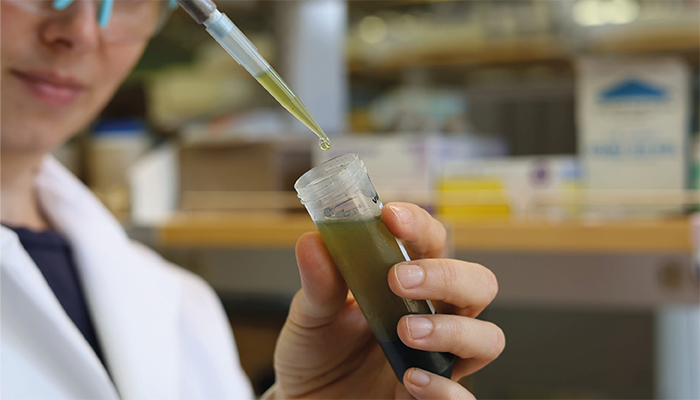A new nuclear magnetic resonance (NMR) spectroscopy-based method to fingerprint organofluorine compounds, including PFAS, could enable authorities to trace these persistent pollutants in the environment to their sources.
Led by two researchers from The University of Texas at Austin, USA – Cornelia Rasmussen, Institute for Geophysics, and David Hoffman, Department of Molecular Biosciences – the team focused on developing a method for position-specific isotope analysis of carbon-fluorine (C-F) bonds in organofluorine molecules. Traditional isotope ratio mass spectrometry (IRMS) methods require the complete combustion of samples to CO2, which is problematic for organofluorine compounds due to the strength of the C-F bonds. Instead, the UT Austin team turned to 19F NMR spectroscopy because it can assess carbon isotopes without breaking these robust bonds.

Credit: Jackson School of Geosciences/University of Texas Institute for Geophysics
The method was validated using 2,2,2-trifluoroethanol and applied to other compounds, including heptafluorobutanoic acid, 5-fluorouracil, and fipronil. The researchers obtained position-specific 13C/12C ratios, providing unique isotopic fingerprints for each molecule. For instance, in 2,2,2-trifluoroethanol, the δ13C values were −29.3 ± 0.8‰ at the C1 position and −25.8 ± 0.6‰ at C2. These differences allowed the researchers to distinguish between samples from different manufacturers. The study also compared the results from 19F NMR with IRMS, finding consistent δ13C values, thereby further validating the NMR technique.
"Ultimately we will be able to trace molecules and see how they move," said Rasmussen, who co-led development of the technique, in a press release. "For example, whether they just stay where they got dumped or whether they're moving downstream."
The study revealed significant intramolecular variation in 13C/12C ratios within the analyzed organofluorine molecules. The most striking result was in fipronil, where two samples from different sources exhibited a more than 10 percent difference in isotope abundance at one of the carbon positions.
"Part of the reason this has worked out so well is because we're assembling tools from different areas of science [chemistry and geosciences] that don't normally mix and using them to do something no one's really done before," said Hoffman.
This technique’s potential application in environmental monitoring is significant. The researchers are conducting a pilot study on pollutants found in Austin’s creeks and wastewater to test the method's efficacy in real-world scenarios. If successful, the technique could become a valuable tool for state and federal agencies to track and regulate the spread of forever chemicals.
This research also opens new avenues for using isotope analysis in other areas, such as detecting counterfeit pharmaceuticals. Andt the method’s ability to analyze complex mixtures without pre-purification could make it a powerful tool in environmental and forensic applications. Pondering more extreme applications, Rasmussen noted, "It's given us a whole range of possibilities to learn really interesting things about metabolism on early Earth. It could even tell us whether organics on Mars are the last remnants of some ancient Martian life."
